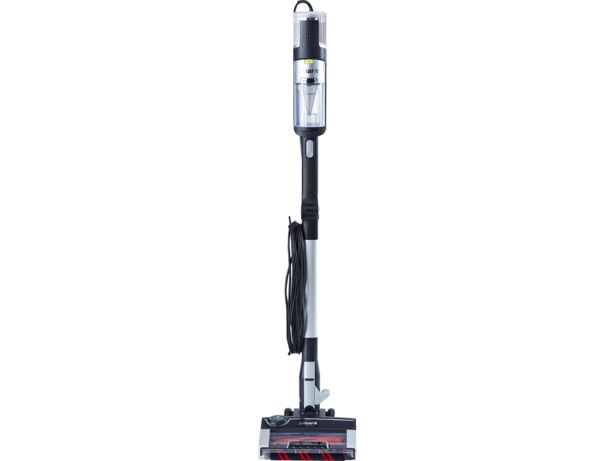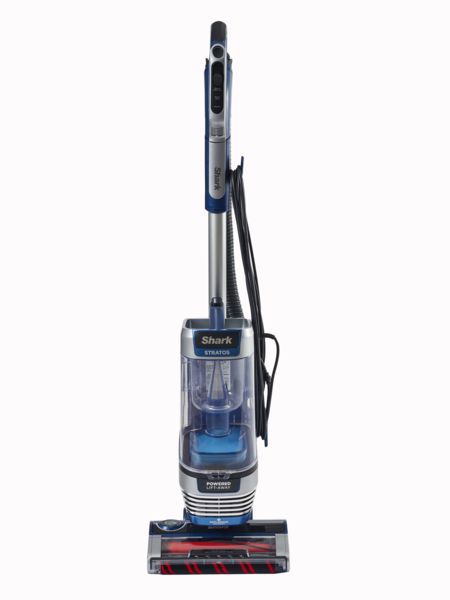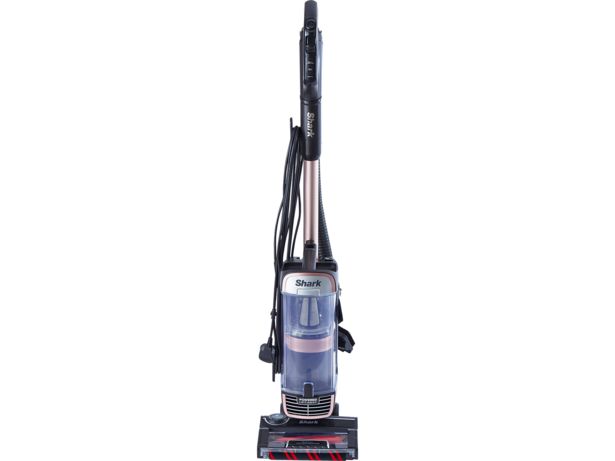How to vacuum your home effectively

Vacuuming your home is a must, but there are ways to make it feel like less of a chore. Our top tips will help you to save time, keep your vacuum working for longer and leave you with a cleaner house.
We've pulled together advice on cleaning all corners of your home, from carpets and floorboards to furniture and stairs.
We also explain how to get the best out of a cordless, corded or robot vacuum cleaner, and how to navigate the myriad of vacuum attachments and accessories.
Discover our pick of the best vacuums and best cordless vacuums to find the hardworking models that we recommend.
Make your home work better for you. Sign up for our free monthly Home newsletter or Tech newsletter
How to vacuum hard floors

Depending on your household, hard floors, such as floorboards and laminate, should need vacuuming around once a week. Here's our step-by-step guide to effective hoovering on hard floors:
1. Remove small objects
Although it's tempting to use a vacuum to clean all your kitchen spillages, they shouldn't be used to tackle anything much bigger than a lentil or grain of rice.
Larger debris can become lodged in the vacuum, causing suction power to deteriorate or diminish entirely, and can even pierce through the inside.
So, if you live with messy eaters, it's best to give the kitchen a once-over with a sweeping brush first. In other rooms, a quick scan for small objects will probably suffice.
2. Adjust the vacuum for hard floors
Before cleaning hard floors, adjust the vacuum cleaner to suit the surface, as using the wrong settings could make it less effective.
Refer to the manual for exact settings, but this is the general advice:
- Cordless vacuums If it comes with a specific tool for hard floors, use it. If not, lower the brushes on the floor head to help the vacuum glide across floors.
- Corded cylinder vacuums If possible, lower the brushes by pressing the switch on the floor head.
- Corded upright vacuums Turn off the rotating brush (if there is one), then lower the floor head if possible.
Some models have recommended power settings for hard floors – find more on that in our vacuum settings advice.
3. Vacuum the same spot more than once
Whether you vacuum in long strokes or short back and forths, it's always worth going over the same spot a few times as even our highest-scoring models won't pick up every bit of dust on the first pass.
This is even more important if you have fluffy pets. In our tests, we comb real cat and dog fur into an area of carpet, and then time how long each vacuum cleaner takes to pick it up. Low-scoring models can take more than three minutes, while the best clear it in less than 30 seconds.
Dust and debris tend to collect at the edges of hard floors, so make sure you clean right up to the wall. If the floor head can't get close enough to the edge, pop the crevice tool on the end of the vacuum's hose (or use the end of the hose itself) and vacuum along the gap.
After you've covered the whole room, you can then decide whether it needs a second going-over.
4. Mop after vacuuming (optional)
The best time to mop is straight after you've vacuumed. There shouldn't be any dust on the floors, so you're less likely to leave dirty streaks.
Although they're usually on the expensive side, some vacs come with mop attachments, such as the Samsung Bespoke Jet VS20A95973B, which saves you lugging around separate appliances.
Not all two-in-one vacs do a good job, as our cordless vacuum reviews reveal
How to vacuum a carpet

Dust and dirt can really get ingrained in your carpets, so you should aim to vacuum at least twice a week.
As with hardwood floors, we recommend:
- Removing small objects before you vacuum
- Adjusting the floor head and settings
- Vacuuming the same spot more than once.
1. Start with your rugs
Rugs can be real dust traps, so it's best to get them sorted first.
If it's dry, beat your rugs outside. You might even be able to hang them on the washing line and use a broom handle to hit them.
Then turn them over and vacuum the underside of the rugs – this helps to loosen dirt on the top side. Next, flip them and vacuum the top. Depending on how delicate your rugs are, you might need to use an upholstery nozzle or large lint roller to protect the fabric.
Once they're dust-free, roll them up while you vacuum the rest of the room.
2. Adjust the vacuum for carpets
Using the wrong settings can make your vacuum ineffective.
Refer to the manual for exact settings, but this is the general advice:
- Cordless vacuums If it has a specific floor head for carpets, use it. If not, raise the brushes on the floor head. If you have long-pile or delicate carpets, you might be better off with a mini motorised tool (see our attachments guide below).
- Corded canister vacuums If possible, raise the brushes by pressing the switch on the floor head.
- Corded upright vacuums Raise the floor head and, if vacuuming short-pile carpet, turn on the rotating brush.
Some models have optimal settings for vacuuming carpets – see our power settings advice.
3. Pay attention to high-traffic areas
The busiest areas of your home are likely to be the dirtiest, even if you have a strict shoes-off policy. Each time an area of carpet is stepped on, dust and dirt sink deeper.
This means high-traffic areas, such as the living room threshold or the bottom step on the stairs, need more attention than low-traffic areas, such as a spare bedroom.
Some top-of-the-range cordless vacs have dust sensors that automatically increase suction when going over a dirt hotspot, but doing several passes over the most trodden areas is also effective.
4. Vacuum dry stains, but not wet ones
Vacuum cleaners can be useful when removing carpet stains, but don't reach for it straight after a spill.
Because they should be kept dry on the inside, sucking up anything wet could cause internal damage. Instead, wait for the stain to dry before attempting to clean.
Once it's dry, vacuum the carpet to remove any loose debris before treating the stain with your preferred method.
Discover the best carpet stain removers – our Best Buys are proven to work on even the most stubborn stains
How to vacuum furniture

Vacuums aren't just for cleaning floors, they can also spruce up furniture.
Lots of models come with upholstery tools designed for vacuuming soft furniture. However, mini motorised tools are often more effective at removing pet hair and ground-in dirt.
Rather than giving furniture a light vacuum once you've finished doing the floors, it's best to vacuum it first as it can cause small amounts of dust and fibres to fall on the floors beneath your furniture, which is frustrating if you've just cleaned it.
Extension wands, handheld vacuums or even the removable handled vacs that usually come with cordless models can help you clear dust from hard-to-reach areas, such as shelves and light fixtures, while an upholstery tool can be useful if you need to tackle a dirty mattress.
Read how to clean a mattress and how to clean a sofa
How to vacuum pet hair

If you share a home with a furry friend, keeping on top of vacuuming is especially important. This way you’ll remove the hair before it has the chance to get deeply embedded in carpets or furniture.
Our testing shows that you don't need a pet vacuum to get the best results. All the vacs we review get a star rating for 'pet hair', so look out for models that achieve four or five stars for cleaning pet hair.
During cleaning, run over the same spot multiple times and in different directions. This helps to dislodge any deeply embedded pet hair. If your pet sheds a lot, it’s better to do a quick sweep with the vacuum every two to three days, rather than less regular, deeper cleans.
Remember that when you're vacuuming any type of hair, cleaning and maintenance of your vacuum once you're finished is important to keep it in good working order. Empty bagless vacuums after each use, and don't forget about the brushes and filters. If you leave them for too long, dust and pet hair will clog up the vacuum and cause it to lose suction.
Choosing the right power settings
Most corded vacuums have a single power setting, although you can often change the suction level.
Cordless vacuums, on the other hand, tend to have multiple power settings – most have at least two (minimum and maximum) and some have three or four.
The written instructions that came with your vacuum should tell you the manufacturer's recommended settings, but as a general guide:
- Minimum power (sometimes known as eco) uses less battery life. It's best for hard floors, which don't require as much cleaning force.
- Maximum power (also called turbo or boost) uses more battery life. It's best for carpets and grubby areas, which require lots of suction.
- Automatic power (or auto) can mean two things – somewhere between maximum and minimum power, or the vacuum uses sensors to automatically switch between minimum and maximum power depending on what type of floor you're cleaning, or how dirty it is.
How to use vacuum attachments

Most new vacuums, especially cordless models, come with lots of add-ons and accessories.
Using the correct attachments can help you clean more effectively. But with so many to get your head around, it can be difficult to know what each one is for.
Some brands, such as Dyson and Shark, have unique names for their attachments but, in essence, they're one of the following:
- Crevice tool A long, skinny attachment for cleaning in tight spots.
- Dusting brush A soft-bristled brush for delicate cleaning tasks.
- Extension wand Like a traditional vacuum hose, it lets you reach further and higher.
- Mini motorised tool Also known as a turbo tool or power nozzle, it's a smaller version of a regular floor head – it's handy for tighter jobs, such as cleaning the stairs or the car, or for removing stubborn pet hair. For models aimed at pet owners, the mini turbo tools are often repackaged as pet tools.
- Mop attachment Allows you to convert your vacuum into a mop.
- Multipurpose/combi floor head A floor head that's suitable for all surfaces – most models come with one of these.
- Soft roller floor head For use on hard floors.
- Turbo floor head For use on carpets.
- Upholstery tool A wide attachment for cleaning soft furniture.
You'll often find adaptors and wand clips (for carrying attachments while you clean) in the box, too.
Thinking of buying a new model? Read our cordless vacuum buying guide for tips and advice
How to use a robot vacuum

Robot vacuums are meant to take the hassle out of vacuuming. And, for the most part, they do.
But to get the best out of it, you need to set a cleaning schedule.
You usually do this in the app, where you can control how often the robot cleans and, depending on the model, where it cleans. You might also be able to choose whether the robot does one lap or two.
More advanced apps, such as the iRobot app, have a feature where the robot begins vacuuming as soon as you leave your home – just remember to take your mobile phone with you or the robot will be none the wiser. Read our iRobot vacuum cleaner reviews for more information.
Make sure you tidy away cords, curtains and tassels to avoid the vacuum getting stuck mid-clean. And moving chairs away from the kitchen table, for example, will make it easier for the vac to reach the debris underneath.
Read all our robot vacuum cleaner reviews
Top tips: how to vacuum your home

No matter what surface you're cleaning or which model you use, here are six vacuuming tips that you should always keep in mind:
- Take your time Quick isn't always effective – it's much better to do a good job once, than to do a slapdash job several times because dust keeps piling up.
- Vacuum often Clean hard floors at least once a week and carpets twice a week. Keeping on top of your chores will save you time in the long run.
- Work from top to bottom Dust falls from higher surfaces when you vacuum them, so it's best to save the floor until last. The same principle applies for stairs – start at the top and finish at the bottom.
- Use an empty, fully charged vacuum Most vacuums work best when the dust container is empty and, if it's cordless, when the battery is fully charged.
- Use the right tool for the job Accessories might seem like a gimmick, but most serve a genuine purpose.
- Maintenance is essential If you want your vacuum to work well for longer, you need to look after it.
Read our vacuum cleaner maintenance guide


